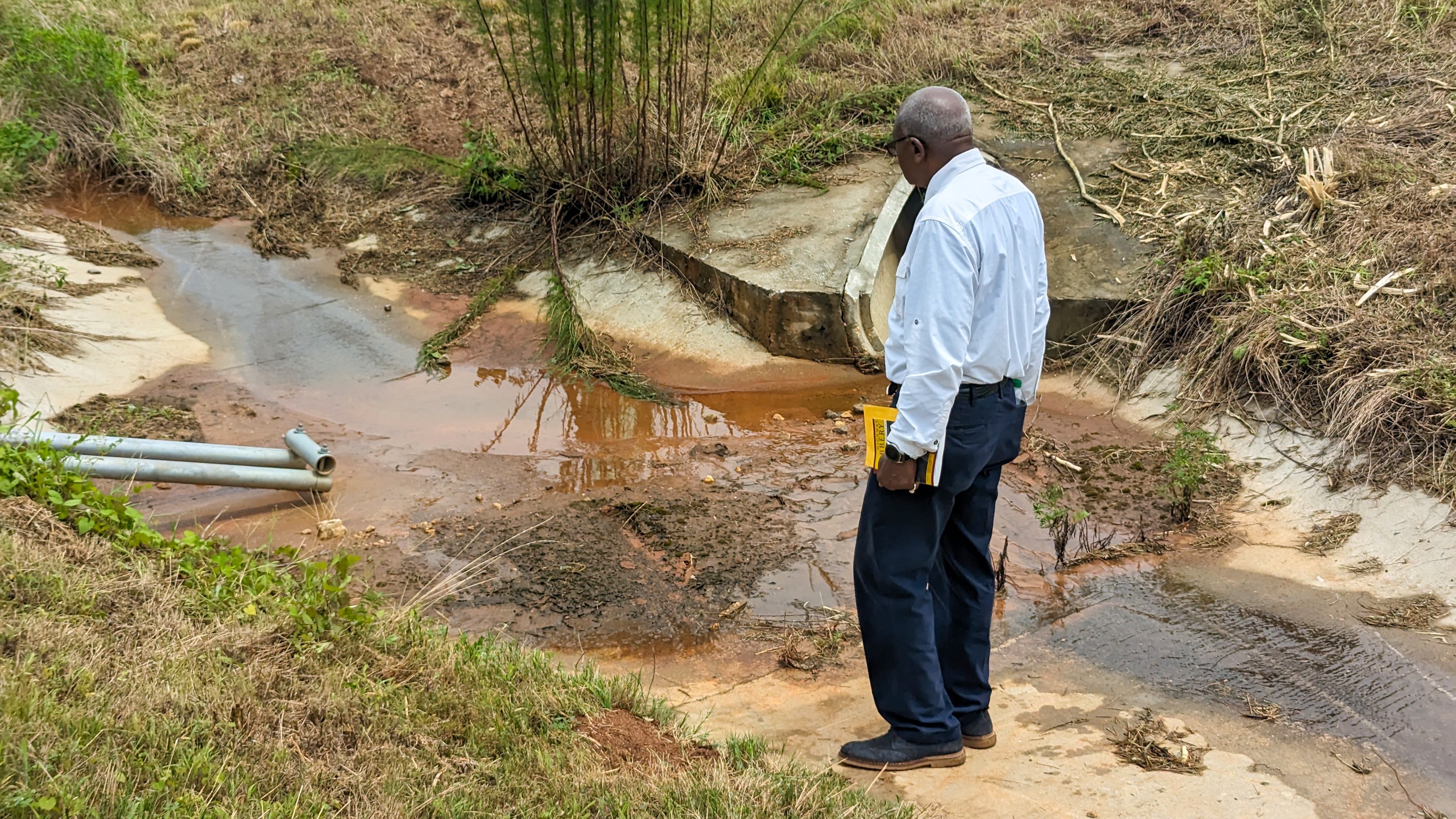
[CLIP: “The residents in this small community fear the worst for the future of their homes because of flooding. They say it’s because of a four-lane highway built by the state several years ago. The father of environmental justice, Dr. Robert Bullard, who grew up in this community almost 50 years ago is now back.”]
Robert Bullard: With climate change, expect in the next 30 years, the U.S. will see a 25 percent increase in flooding. But for Black communities we’re talking 40 percent. And you’re going to destroy it with a highway? Oh, hell, no. We’re going to fight like hell.
Well, Houston is a petropolis, and we are ground zero for a lot of major issues around dependency on oil and gas, the impact of climate change.
Racial redlining was a form of discrimination that denied Black and brown communities loans and mortgages and infrastructure. Those areas that were redlined in the 1930s are the areas that are more prone to flooding, more prone to have more pollution, more prone to have urban heat islands—where it’s hotter, no green space, no green canopy—and, as we learned the last couple of years, are the same places that have more COVID cases in terms of infections, hospitalizations and deaths. When you map those, it’s mostly lower-income and people of color that are living with those hotspots.
I started this work dealing with the environment and race before it was a movement or the whole concept of environmental justice.
You have to understand, this was 1979. There was no methodology, there was no protocol for mapping landfills. We actually went to archival records, old maps, and reports for the data. And we actually went out and got the addresses of landfills that we had found and physically stood on the site to see them.
And I would tell my students, I said, “Houston is flat. Any time you see a mountain in Houston, be suspicious— landfill.” And so we were able to find the landfills and incinerators or their artifacts where they were and put them on a map and color coded those census tracts’ locations with magic markers.
And yellow was a less than 10 percent minority and went all the way up to red being 50 percent or more. And it just so happened, uh, the vast majority of the pins, map pins designating landfills were in the red: in majority-Black neighborhoods.
Five out of five of the city owned landfills. Six out of eight of the city owned incinerators. And three out of four of the privately owned landfills in Houston were located in predominantly Black neighborhoods.
You know, I’ve been doing this work for four and a half decades. These structural factors behind racism still persist. Some people just don’t want to believe the data. They don’t want to believe their own eyes.
Dumping in Dixie was the first book on environmental justice, and I got letters, nasty letters from publishers, saying, “Well, the environment is neutral, is objective. There’s no such thing as environmental justice. Everybody is treated the same.” Even today there’s a lot of that going on.
The issue of justice still remains. America is segregated, and so is pollution. And so if we are to solve many of our environmental problems, we have to solve the problems of inequality and use a justice and equity lens.
[CLIP: “This is Houston, Texas, headquarter city.”]
Bullard: As someone who came of age during the Civil Rights Movement.
[CLIP: Martin Luther King, Jr.: “Not the texture of his hair or the color of his skin.”]
Bullard: I’m a bit impatient about the pace of change. And the pace of change when you have the facts, you have data, you have information, you have the science. And somehow, all that just doesn’t get into policy and action.
If I seem indignant, it’s, it’s because I am, because we have the answers.
We are at an emergency, and climate change is knocking on the front door, and somehow we’re just sitting on the couch, twiddling our thumbs or watching TV.
You know, these heat waves with flooding, with these hurricanes, you know, the world is burning. The world is on fire. And I think we have to speed up the solutions.
Forty years is too long. We don’t have forty years.
